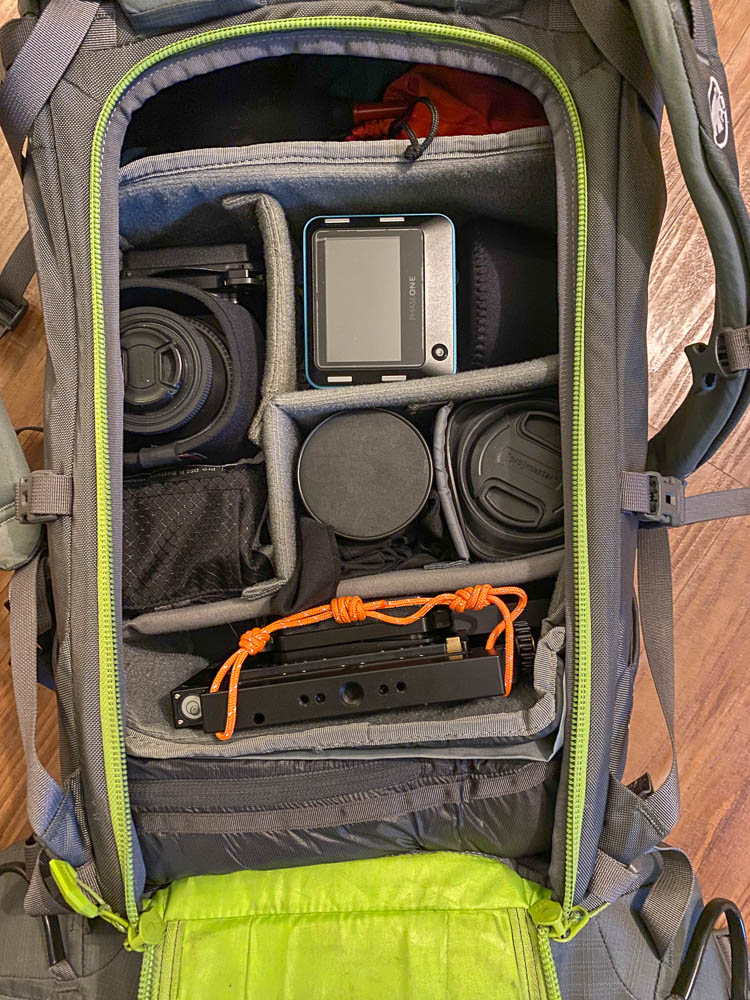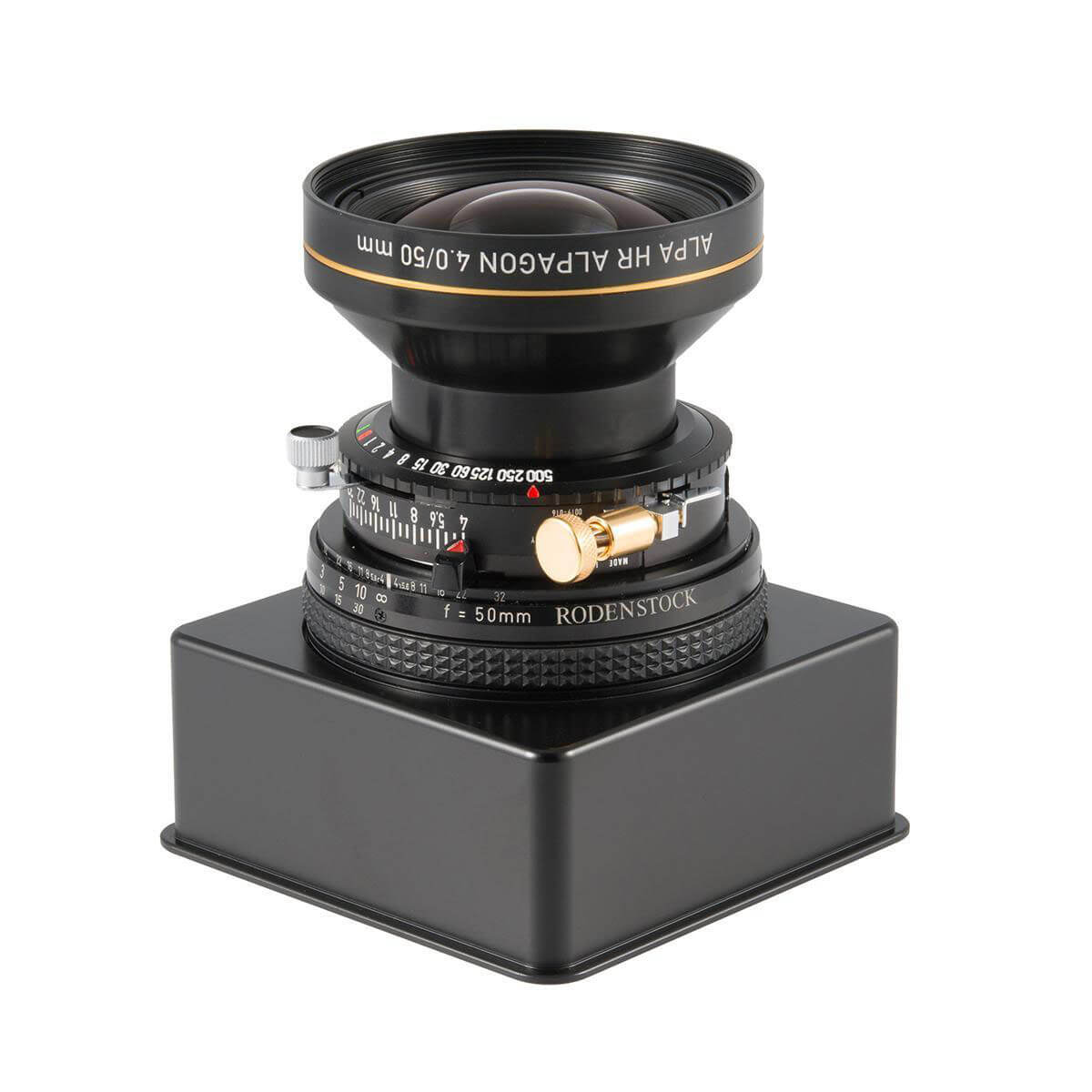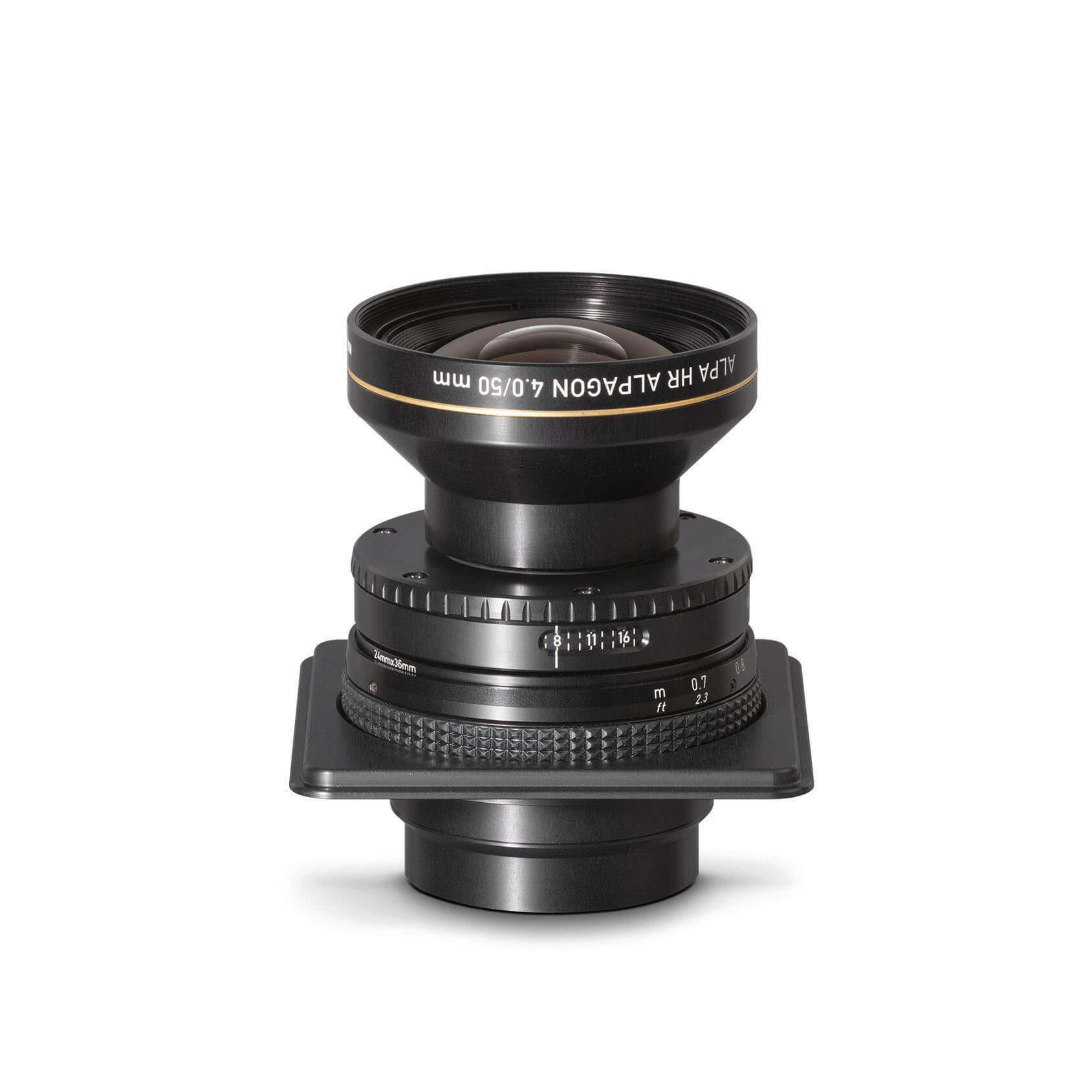Since the other thread topic was about Cambo, I moved my response to your Alpa question here.
Short barrel vs long barrel:
Long barrel lenses mount onto the camera without any additional adapters. The adapters are really just spacers like what we call "extension tubes" in 35mm camera land. Short barrel lenses need adapter(s) to sit the correct distance from the film/sensor plane. Here is an example of a long barrel mount vs short barrel mount; both are the 50mm lens.
Long barrel:
Short barrel (in this case, SB34):
See how the square "cone" on the short barrel is shorter? That is what short-barrel (SB) means. SB lenses come in three sizes depending on the lens: 17, 34 and 51. Those numbers refer to the distance in mm the lens mount has been "shortened" and tells you the size and/or number of adapters required to mount the lens. You can either get adapters for that specific size or stack them. I stack them to save space and weight. I carry the 17 and 34 adapters and use them for the 60xl (17mm), sk90 (34mm) and 138 (51mm = 17 + 34). If I did not have the 138, I would just carry two 17mm adapters and stack them for SB 34 lenses.
Initially, it might seem like LB lenses are preferred since you won't need any adapters. But the opposite is the case. You almost always want SB lenses for two reasons: First, the only way to tilt with Alpa is with the TS adapters, and you can only use TS adapters with SB lenses. So if you want to tilt, you need the SB mount. Second, the SB lenses are smaller and lighter. This is especially true with longer lenses like the 120, 138, 150 and 180.
Several years ago, Alpa's Achilles heal was this fact that you needed the adapter to tilt, and all the wide Schneider lenses did not have room to do that. With Alpa, you cannot tilt any of Schneider's lenses wider than 60mm. Today it is not as big a deal because all the lenses currently available have room to be SB mounts and can tilt. If you want to use legacy Schneider lenses, this is an important limitation.
As for the wide-end lens choice, you can probably do the Canon 24 and get some movement with the 44x33 back. I've never done that so others will have to chime in. The 40 is a good option and very popular, but two things to note: 1) it is really a 42mm lens, so make sure it is wide enough for you. 2) It still has some distortion compared to a Schneider lens. Here is a good map of distortion for all the lenses:
https://www.alpa.swiss/alpa-media-asset/alpa-visual-distortion-charts
You are correct about the color cast. That should be good in most situations. You may still need an LCC for larger movements. You might consider the Rodi 32mm. It is big and expensive, but with movements you might get away with just one lens. It also has distortion, but that can be fixed using the Alpa Lens Corrector plugin. I think it is also built into Capture One, but I might be wrong about that. I've never owned the 32.
Ciao,
Dave



